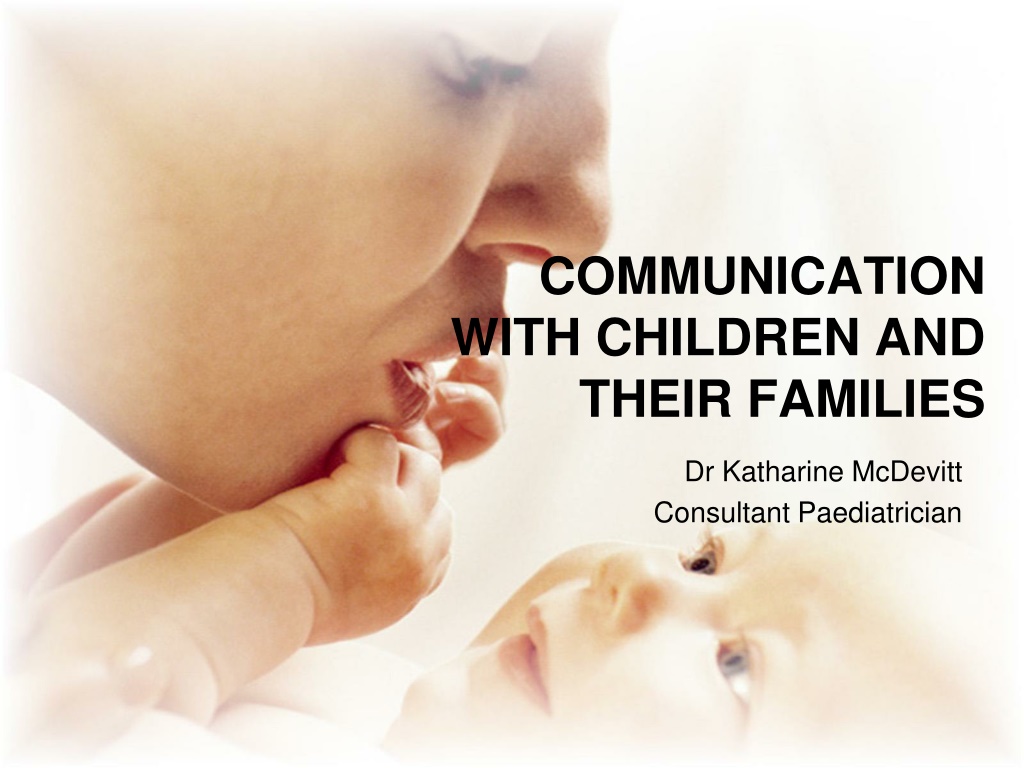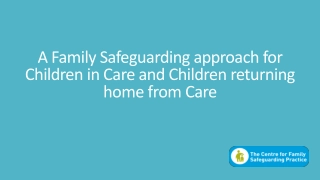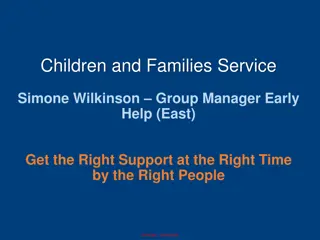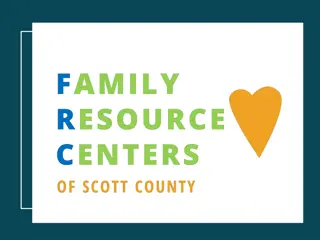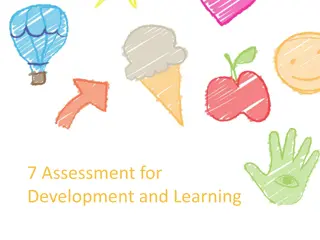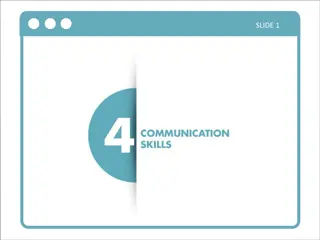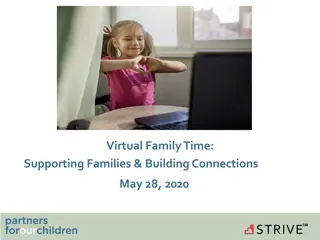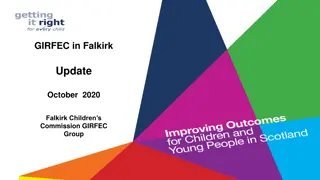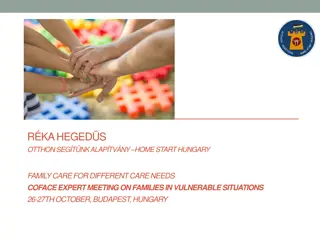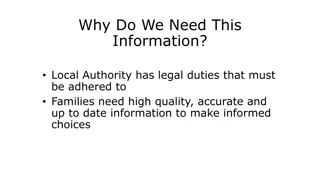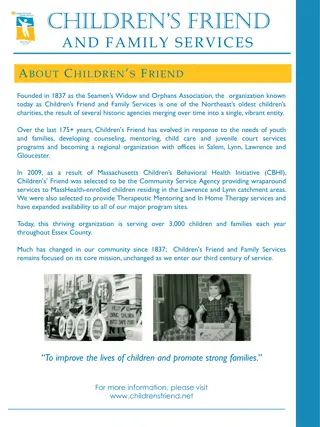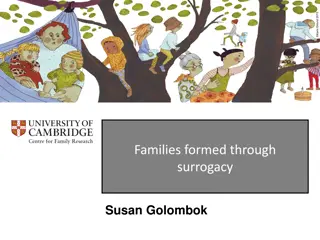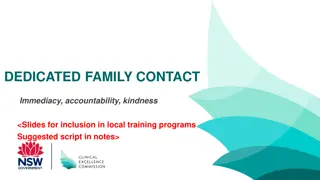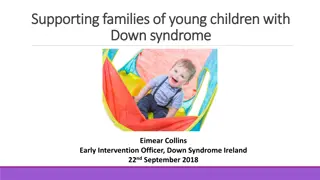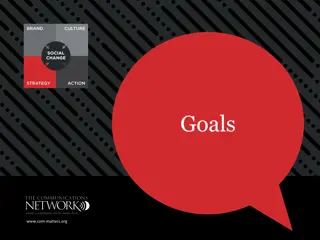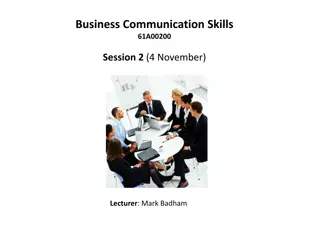Effective Communication with Children and Their Families: Importance and Strategies
Effective communication with children and their families is crucial in healthcare settings. Dr. Katharine McDevitt emphasizes the significance of building trust, enhancing patient outcomes, and reducing litigation through improved communication. The control of conversations, understanding children's unique needs, and utilizing appropriate strategies are key components for successful interactions. By considering differences in age, literacy, and autonomy, healthcare providers can create a positive and engaging environment for pediatric patients and their families.
Download Presentation

Please find below an Image/Link to download the presentation.
The content on the website is provided AS IS for your information and personal use only. It may not be sold, licensed, or shared on other websites without obtaining consent from the author. Download presentation by click this link. If you encounter any issues during the download, it is possible that the publisher has removed the file from their server.
E N D
Presentation Transcript
COMMUNICATION WITH CHILDREN AND THEIR FAMILIES Dr Katharine McDevitt Consultant Paediatrician
Why does it matter? Statutory requirement1 Improved patient outcomes2 Improved patient satisfaction3 Decreased litigation4 It s actually quite fun increased job satisfaction! 1. 2. Improving Services for Children in Hospital. Healthcare Commission; 2007 Stewart MA. Effective physician-patient communication and health outcome; a review. CMAJ, 1995; 152:1423- 33 Tongue, JR. Communication Skills for Patient-Centred Care. JBJS, 2005; 87(3): 652-8 Huntington, B. Communication Gaffes; a root cause of malpractice claims. BUMC PROCEEDINGS 2003;16:157 161 3. 4.
CONTROL OF THE CONVERSATION5 5 Wassmer E, How do paediatricians commmunicate with children and parents? Acta Paed 93: 1501-6. 2004
TIME6 In two minutes the average patient will tell you 80% of what you need to know. The average doctor interrupts after xxxx 12 seconds 6. Hensinger, R. Communication between the doctor and the child. J Pediatr Orthop. 2010; 30:213-215
How are children different? Pre-lingual vs lingual Pre-readers vs readers Gradual increase in understanding Gradual increase in autonomy
Babies/pre-lingual Rising tones motherese > 8-12/12 stranger awareness/fear Can you examine on Mum s lap or Mum on the bed too? Let Mum undress
2s-5s(ish!) Avoid too early eye-contact if shy Engage in play with/without toys if less shy Talk to parent/s and allow to warm up Ask them who they want to undress them Are they still better on Mum s lap? PLAY bubbles/noises/funny faces/magic Know your TV characters!
5s-10s(ish) - history Address them by name Comment on something non medical eg uniform/logo on shirt/hair ribbon/shoes Invite them to choose who sits where GET DOWN ON THEIR LEVEL Ask them questions allow time for response dead air repeat their answers Is it ok if I ask Mum some questions?
5s-10s(ish) - examination Let them move the bed up and down Wait while they take off their clothes DISTRACTION, DISTRACTION, DISTRACTION! Eye contact Make it a game Acknowledge pain or difficulty
ADOLESCENTS Increasing autonomy Decreasing engagement? Need encouraging to participate Difficulty in expressing health concerns7 Poor understanding of confidentiality8 Time on their own Electronic communication?9 7. Beresford B. Chronically ill adolescents experiences of communicating with doctors: a qualitative study. J.Adolesc Health, 2003: 33, 172-9 8. Churchill R. Do the attitudes and beliefs of young teenagers towards general practice influence actual consultation behaviour? Br J Gen Pract. 2001, 51: 811-6 9. Harvey, K. Health communication and adolescents: what do their emails tell us? Family Practice, 2008; 25: 304-11
HEADS (HEEAADDSS) HOME EDUCATION/EMPLOYMENT EXERCISE ACTIVITIES ALCOHOL DRUGS DIET SEX SUICIDALITY SMOKING
THE FIRST 2 MINUTES!10 Seat them in prime position Introduce yourself to them first Ask them what they like to be called & who they ve brought Show interest in them problem free talk Explain that you will routinely see them alone Ask them first, then their parents Ask them permission to ask their parents Use your language, ask them to explain theirs 10. White B. Improving communication with adolescents. Arch Dis Child Educ Pract Ed, 2012; 97:93-97
CONFIDENTIALITY Spell it out Define what you mean Keep your word
COMPETENCE10 Under 16 may consent to treatment cannot veto life saving treatment cannot veto treatment to prevent serious harm Test their understanding Doctors have a duty to enhance competence Negotiate if time 11. Larcher V. How should paediatrician assess Gillick competence? Arch Dis Child 2010; 95:307-311
BARRIERS TO COMPETENCE/COMPLIANCE False assumptions by parents by young person by professionals Pain Fear Confusion Fatigue Medication
In General Choose words carefully other or many vs normal you vs he/she young people vs children in > 12s Consider using stories in the young Stickers/reward systems You are being judged even if they re playing!11 12. Birch S. Three and four year olds spontaneously use others past performance to guide their learning. Cognition; 2008; 107:1018-1034
